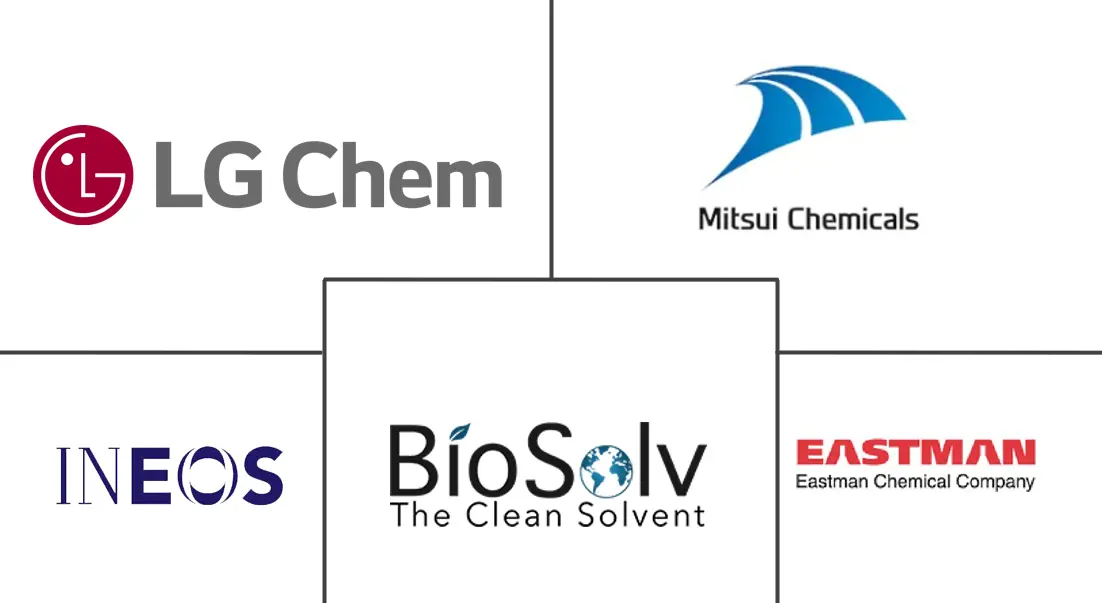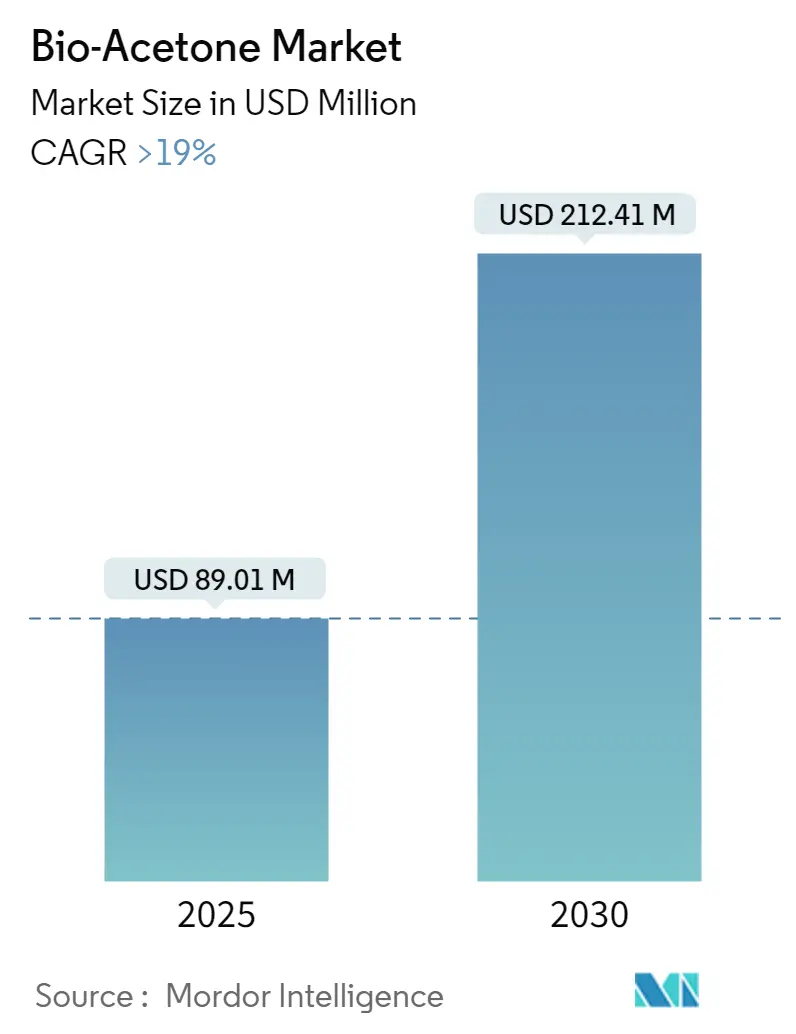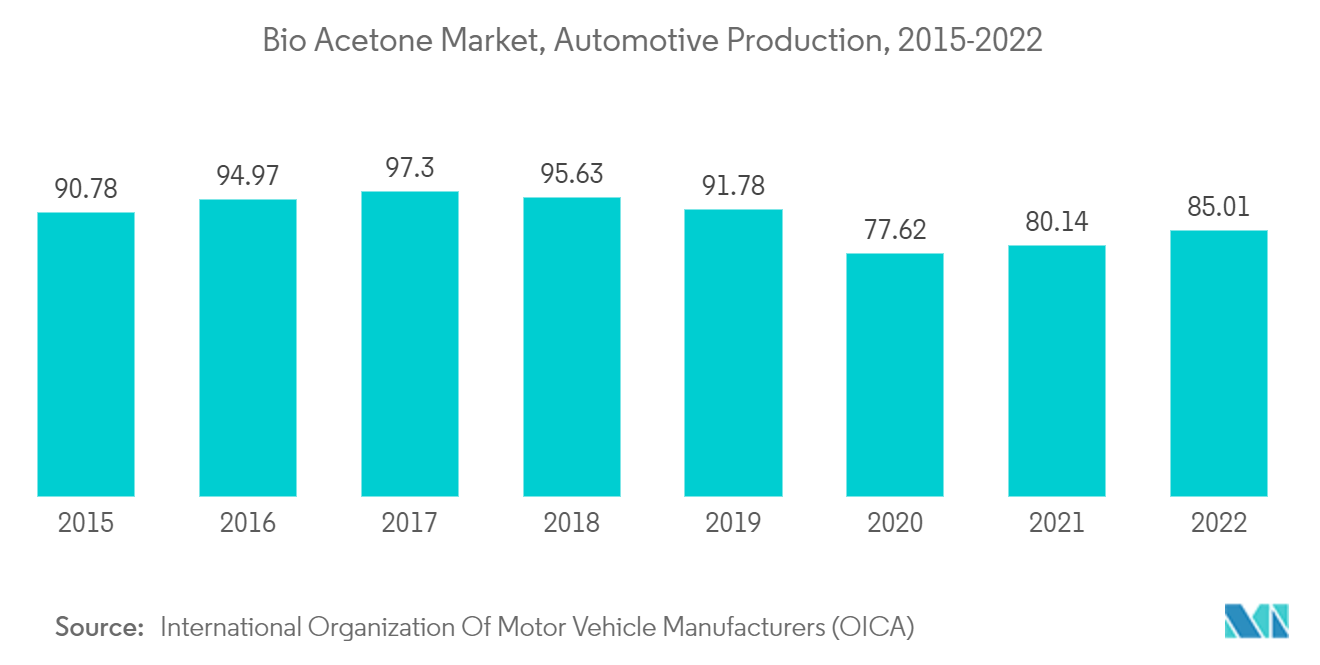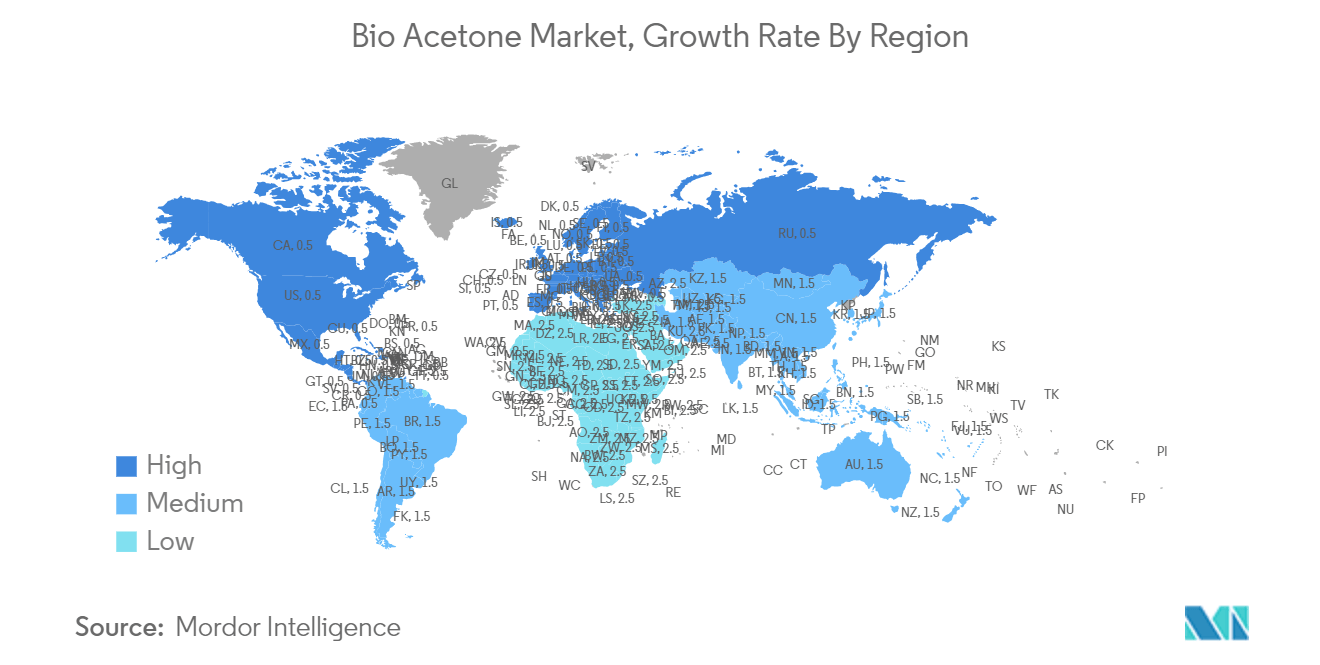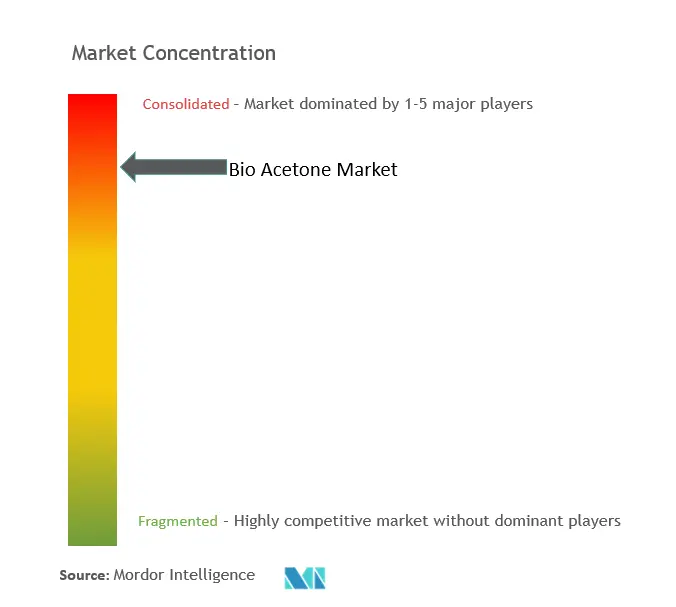Bio-Acetone Market Analysis
The Bio-Acetone Market size is estimated at USD 89.01 million in 2025, and is expected to reach USD 212.41 million by 2030, at a CAGR of greater than 19% during the forecast period (2025-2030).
The COVID-19 pandemic negatively impacted demand in the market due to lockdowns and restrictions imposed by various countries. However, the market recovered in 2021 and returned to pre-pandemic levels in 2022 and 2023 with the rise in applications in various industries.
Over the short term, the demand for bio-acetones is propelled by the demand for bio-based products from various industries, such as paints and coatings.
Conversely, the availability of various alternatives is expected to hinder the market's growth in the future.
The increasing technology for producing bio-based products is expected to create opportunities for the bio-acetone market during the forecast period.
Bio-Acetone Market Trends
Growing Demand For Bio-Based Paints and Coatings
- Bio-acetone is a renewable version of regular acetone and has the same characteristics as acetone with identical chemical properties.
Some of the advantages of bio-acetones include:
- They are safe and non-carcinogenic. They are high-performance solvents and can be used in various paints and coatings.
- They are made of renewable sources and are bio-degradable. They are effective in polyurethane paints, UV-curable coatings, enamels, and varnishes.
- They are used as thinners in paints and coatings manufacturing. Paints and coatings are used in various applications, including automotive, construction, packaging, furniture, textiles, and other applications.
- Many industries have started using products with low volatile organic compounds (VOC), and the increase in VOC regulations has led to a rise in demand in the market in recent times. Since bio-acetones are manufactured from plant-based raw materials such as corn, bio-solvents are used mainly in lower VOC-based paints and coating products.
- In the automotive industry, the demand for bio-based coatings is increasing owing to various VOC regulations. Bio acetone is used as a solvent in bio-based coatings and is applied to various applications such as dashboards, steering wheels, door trims, and other automotive vehicles.
According to the latest data released by the International Organization Of Motor Vehicle Manufacturers (OICA), the total number of vehicles manufactured in 2022 was around 85 million units compared to 80 million in 2021.
- In addition, there has been a rise in electric vehicle manufacturing in various countries, further propelling the demand for bio-based coatings in the automotive industry.
- Due to the rise in VOC regulations in various countries, the demand for bio-based paints and coatings is on the rise, which is expected to positively impact the demand in the market during the forecast period.
Europe To Become the Largest Consumer
- Europe is expected to be one of the largest consumers of bio-acetone due to various regulations set up for renewable-based products.
- The VOC emission from the coatings industry has raised various environmental and human health issues. This has led various countries to follow the directives laid by the European Union in the coatings industry.
- The European Union has started the implementation of the VOC solvents emission directive (SED) to reduce VOC emissions from industrial activities, including the paints and coatings industry.
- The SED has set up emission limits for VOCs and requires industries such as paints and coatings manufacturing to use low-VOC or zero-VOC-based solvents in the manufacturing process.
- In the cosmetics industry, bio-acetone is used as a nail polish remover owing to its superior characteristics and low toxicity compared to acetones.
- According to Cosmetics Europe, the personal care association, the cosmetics industry was valued at EUR 88 billion (~USD 94.9 billion) in 2022.
- The largest cosmetics markets in the region are Germany, France, Italy, the United Kingdom, and Poland. All these countries account for more than 67% of the total cosmetics market in the region.
- All these factors are expected to drive the demand for bio-acetones in various European countries during the forecast period.
Bio-Acetone Industry Overview
The global bio-acetone market is consolidated. Some major players (not in any particular order) include LG Chem, Mitsui Chemicals, INEOS, Bio Brands LLC, and Eastman Chemical Company.
Bio-Acetone Market Leaders
-
LG Chem
-
Mitsui Chemicals
-
INEOS
-
Bio Brands LLC
-
Eastman Chemical Company
- *Disclaimer: Major Players sorted in no particular order
Bio-Acetone Market News
July 2022: LG Chem started exporting bio-based acetone products and acquired the International Sustainability & Carbon Certification PLUS (ISCC PLUS) for its products.
February 2022: Covestro and Mitsui Chemicals agreed on the supply of raw acetone materials from ISCC Plus certified mass-balanced sources. These certifications ensure that the products manufactured by Mitsui Chemicals will be based on renewable sources.
Bio-Acetone Industry Segmentation
Bio-acetone is an alternative to petroleum-based acetone and is produced from various economically friendly raw materials such as corn. It is used as a solvent and thinner in various industries, including paints and coatings.
The Bio-Acetone Market is segmented by material type, application, and country. By type, it is segmented by purity, i.e. <99% and >99%. By application, the market is segmented by plastics, rubber, paints, coatings, and other applications (nail polish remover, cleaning agent, chemicals intermediaries, and others), and by geography, the market is segmented by Asia-Pacific, North America, Europe, South America, and the Middle East and Africa. The report offers market size forecasts for the bio-acetone market in 27 countries across major regions. For each segment, the market sizing and forecasts have been done based on revenue (USD million).
| Type | Purity <99% | ||
| Purity >99% | |||
| Application | Plastics | ||
| Rubber | |||
| Painting | |||
| Other Applications (Nail Polish Remover, Cleaning Agent, Chemicals Intermediaries, etc.) | |||
| Geography | Asia-Pacific | China | |
| India | |||
| Japan | |||
| South Korea | |||
| Malaysia | |||
| Thailand | |||
| Indonesia | |||
| Vietnam | |||
| Rest of Asia-Pacific | |||
| North America | United States | ||
| Canada | |||
| Mexico | |||
| Europe | Germany | ||
| United Kingdom | |||
| France | |||
| Italy | |||
| Spain | |||
| Turkey | |||
| Russia | |||
| NORDIC Countries | |||
| Rest of Europe | |||
| South America | Brazil | ||
| Argentina | |||
| Colombia | |||
| Rest of South America | |||
| Middle East and Africa | Saudi Arabia | ||
| Nigeria | |||
| Qatar | |||
| Egypt | |||
| United Arab Emirates | |||
| South Africa | |||
| Rest of Middle East and Africa | |||
Bio-Acetone Market Research FAQs
How big is the Bio-Acetone Market?
The Bio-Acetone Market size is expected to reach USD 89.01 million in 2025 and grow at a CAGR of greater than 19% to reach USD 212.41 million by 2030.
What is the current Bio-Acetone Market size?
In 2025, the Bio-Acetone Market size is expected to reach USD 89.01 million.
Who are the key players in Bio-Acetone Market?
LG Chem, Mitsui Chemicals, INEOS, Bio Brands LLC and Eastman Chemical Company are the major companies operating in the Bio-Acetone Market.
Which is the fastest growing region in Bio-Acetone Market?
Europe is estimated to grow at the highest CAGR over the forecast period (2025-2030).
Which region has the biggest share in Bio-Acetone Market?
In 2025, the Europe accounts for the largest market share in Bio-Acetone Market.
What years does this Bio-Acetone Market cover, and what was the market size in 2024?
In 2024, the Bio-Acetone Market size was estimated at USD 72.10 million. The report covers the Bio-Acetone Market historical market size for years: 2019, 2020, 2021, 2022, 2023 and 2024. The report also forecasts the Bio-Acetone Market size for years: 2025, 2026, 2027, 2028, 2029 and 2030.
Our Best Selling Reports
Bio-Acetone Industry Report
Statistics for the 2025 Bio-Acetone market share, size and revenue growth rate, created by Mordor Intelligence™ Industry Reports. Bio-Acetone analysis includes a market forecast outlook for 2025 to 2030 and historical overview. Get a sample of this industry analysis as a free report PDF download.

